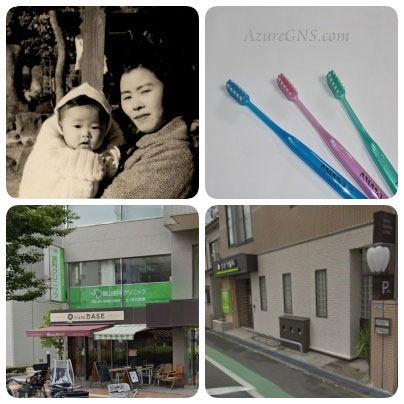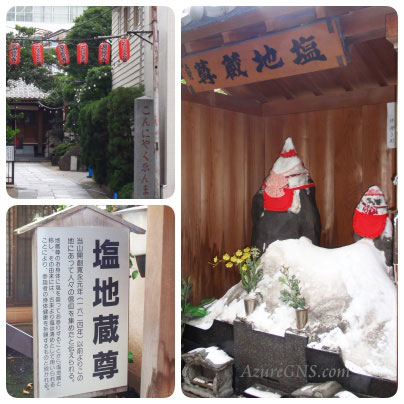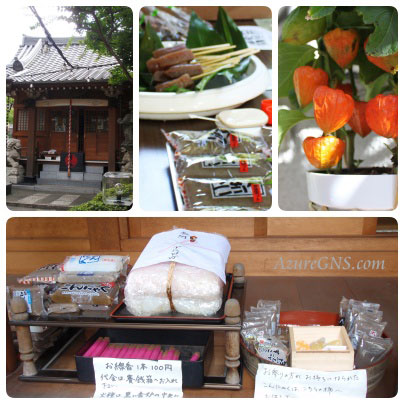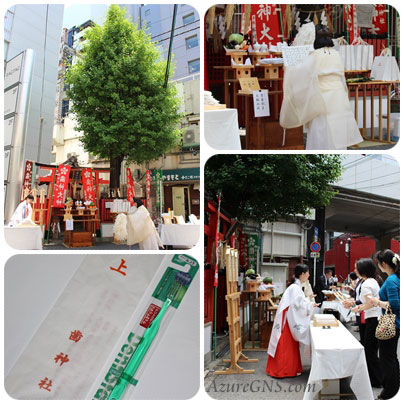Wagaya no Ha-to-kuchi-no-kenko-shukan;
(Our Experience during the Week concerning the Promotion of Dental and Oral Health)
子供の頃は、母が虫歯予防のために私に歯磨きを徹底させてくれたおかげで、私の歯は健康に保たれていました。幸い、生まれながら歯並びも良く、矯正の必要はありませんでした。ただ、親知らずが4本とも生えて、そのための痛みと発熱にずいぶん苦しみ、結局4本とも抜歯をしました。出産後は急激に歯が弱くなったのか、次々と虫歯になってしまいました。歯医者運はなく、夫の仕事の関係で転勤が多かったため、それぞれの場所でやっと良い歯医者さんが見つかった頃には再び引っ越しを繰り返しました。現在では、東京と関西で信頼できる腕の良い歯医者さんと出会えて、ほっとしています。
When I was a child, my mother made me brush my teeth thoroughly, so my teeth stayed healthy. Fortunately, as I had straight teeth, my teeth did not need braces. However, I cut four wisdom teeth which caused me pain and a high fever, and eventually I had my four wisdom teeth removed. After I gave birth to my son, my teeth suddenly became very weak and I got cavities one after another. I had difficulty in seeing good dentists, and I had to move several times because of my husband’s job transfers even though I found one in each location. These days, I am relieved to find reliable and skillful dentists both in Tokyo and the Kansai Area.
東京都文京区にある白山神社は948年(天歴2年)に加賀国(現石川県南部)の白山比咩神社(しらやまひめじんじゃ)の勧請を受けて創建されました。起源は諸説ありますが、この白山神社には江戸時代より歯痛平癒の信仰があります。江戸時代(1603-1867)中期、歯痛で苦しんでいた後桜町天皇が、女官がこの神社から持ち帰った神箸(しんばし)で神塩を虫歯につけたところ歯痛が治まったそうです。また白山が「歯苦散」の語呂合わせになるとも言われています。文京花の五大まつりのひとつであり、6月に開催されるあじさいまつりには毎年出かけました。あじさいまつりの期間中の数日に歯ブラシ供養が行われています。人々は使った古い歯ブラシを神社へ持って行ってお参りします。先着100名へ新しい歯ブラシが授与されたり、歯科医師会の協力で歯科相談コーナーが開設されたりします。
Hakusan Shrine in Bunkyo Ward, Tokyo was founded in 948 (Tenryaku 2nd yr) by transferring a divided tutelary deity from Shirayama-Hime Shrine in Kaga-koku (the present south part of Ishikawa Prefecture). This Hakusan Shrine is believed to relieve toothaches though there are various theories on its origin. In the middle of the Edo Period (1603-1867), the Empress Gosakuramachi put sacred salt on her decayed tooth with sacred chopsticks which her court lady brought back from this shrine, and her toothache was gone. It is also said that Hakusan implies “Ha-ku-san” (to drive toothaches away). Every year, I visited Ajisai-matsuri (Hydrangea Festival) held in June, which is one of the five major flower festivals in Bunkyo Ward. During several days of Ajisai-Matsuri, a toothbrush memorial and thanksgiving ceremony is held. People bring their used toothbrushes and pray for them. New toothbrushes are offered to the first 100 visitors, and a dental counseling corner is held by the Dental Association.
白山神社は全国に2,700余りあり、石川県白山市に鎮座する白山比咩神社(しらやまひめじんじゃ)を総本社とします。以下は私が訪れたことがある白山神社の一部です。
There are about 2,700 Hakusan Shrines all over the country and their grand head shrine is located in Hakusan City, Ishikawa Prefecture. The following pictures are Hakusan Shrines which I visited:
(1) 石川県白山市三宮町の白山比咩神社
(1) Shirayama-Hime Shrine, Sannomiya Town, Hakusan City, Ishikawa Prefecture
(2) 福井県勝山市平泉寺町の平泉寺白山神社
(2) Heisenji Hakusan Shrine in Heisenji Town, Katsuyama City, Fukui Prefecture
(3) 新潟県新潟市中央区の白山神社
(3) Hakusan Shrine in Chuo ward, Niigata City, Niigata Prefecture
(4) 福井県あわら市浜坂の白山神社
(4) Hakusan Shrine in Hamasaka, Awara City, Fukui Prefecture
(5) 岩手県西磐井郡平泉町の白山神社
(5) Hakusan Shrine in Hiraizumi Town, Nishiiwai County, Iwate Prefecture
東京都文京区小石川にある源覚寺(げんかくじ)の境内の塩地蔵尊も、歯病にご利益があることで有名です。地蔵尊に塩を盛ってお参りするので塩地蔵尊と呼ばれています。古来より塩はお清めに用いられることがその由来で、歯だけではなく体の中で調子の悪い所に塩を塗ると良いと言われています。また塩は白いことから、真っ白な歯を願う人々も多く訪れます。
Shio-jizo (“Shio” is salt and “Jizo” is the guardian deity of children and travelers in Buddhism) in Genkaku-ji Temple of Koishikawa, Bunkyo Ward, Tokyo is also famous for answering prayers for the cure of dental diseases. The name of Shio-jizo originates from the salt which worshippers bring in and pile around the Jizo for prayers. Since ancient times, it has been said that salt has the power of purification, so that it is useful to rub salt not only on bad teeth but also other affected parts. In addition, many people who want their teeth to be white visit the temple because the salt is white.
源覚寺は1624年(寛永元年)に創建され、多くの人に信仰され、特に二代将軍徳川秀忠と三代将軍徳川家光が信仰しました。このお寺の木造の閻魔大王の座像は、源覚寺より古い鎌倉時代(1185頃-1333)の作と謂われ、右目が黄色く濁っています。故事よると、宝暦年間(1751-1764)眼病を患った老婆が、この閻魔様に毎日眼病平癒を祈願したところ、夢の中に閻魔大王が現れ「私の片目をあなたにあげて治してあげよう」と告げました。その夢の後すぐに眼病が治った老婆は閻魔大王にとても感謝して、好物のこんにゃくを断ち、供え続けたそうです。以来、このお寺はこんにゃくえんまと呼ばれるようになり、現在でもこんにゃくをお供えして祈願する人が多くいます。私は数年前に、このお寺で行われる夏のほおずき市や、大晦日の除夜の鐘の集いへ足を運んだことがあります。
Genkaku-ji Temple was found in 1624 (Kanei 1st yr), and many people believed in this temple, especially the second shogun, Tokugawa Hidetada and the third shogun Tokugawa Iemitsu. A wooden seated statue of Enma-daio, the king of hell, with a yellow right eye is said to have been made in the Kamakura Period (around 1185-1333) and is older than Genkaku-ji Temple. According to the legend, in the Horeki Period (1751-1764) the elderly woman who suffered from an eye disease prayed to Enma-daio for a cure every day, and he appeared in her dream and said to her, “I will give you one of my eyes to treat your eye disease”. Soon after the dream, her eye disease was cured, and she thanked him so much that she gave up eating her favorite Konnyaku and kept offering it to him. Since then, this temple has been called Konnyaku-emma, and still now many people visit the temple with Konnyaku to pray. A few years ago, I visited this temple to see Hozuki-ichi (a ground-cherry fair) in the summer and listened to Joya-no-kane on New Year’s Eve.
大阪市北区に「歯神(はがみ)さん」と呼ばれ親しまれている歯神社があります。綱敷天神社の末社で、もとは農耕神として祀られています。淀川の決壊がこの付近で歯止めされたことから歯神社と呼ばれるようになりました。時が経つにつれ、神社の名前の意味が変わってきて、「歯止め」は「虫痛を止める」と考えられるようになり、虫痛止めの神社として知られるようになりました。歯痛、歯並び、入れ歯のトラブルなどで苦しむ人だけでなく、歯科医師の腕の向上、歯科医院の経営向上、歯科大学の学生の学業成就を祈念する人達もこの神社にお参りに来ます。
Ha Shrine, known as “Ha-gami-san” (the god of teeth), is located in Kita Ward, Osaka City. This is a subordinate shrine belonging to Tsunashiki Tenjin Shrine, and originally dedicated to agricultural gods. In times past when the Yodo River flooded, the flood stopped (“Ha-dome” in Japanese) around this shrine, and the shrine came to be called Ha Shrine. As time went by, the significance of the shrine’s name changed: “Ha” also means “tooth” and “dome” means “stop”, so it became known as the shrine to stop toothaches. The prayers to this shrine are not only those who suffer from toothaches, irregular sets of teeth and troubles of artificial teeth, but also dentists who pray for improvement of their techniques and management, and students of dental colleges who pray for academic achievement.
2015年(平成27年)、「歯と口の健康週間」の初日の6月4日に歯神さんの例祭、歯ブラシ感謝祭へ行ってきました。電車で大阪へ行くのは10数年ぶりなので、何度も地図を確認し、前夜夫に道を教えてもらったにもかかわらず、大阪駅の自動改札を出たとたんに迷ってしまいました。改札の近くにいらした2人の女性に道を地図を見せながら道を尋ねると、なんと神社のすぐそばまで連れて行って下さいました。本当に大阪の人は親切だなと改めて実感して、本当に嬉しかったです。神社に着くと間もなく神事が始まりました。私は持って行った家族3人の歯ブラシを神社に納めて、これからの1年の家族の歯の健康を願いながらお参りしました。全日本ブラシ工業共同組合の協賛で、先着100名に歯ブラシの授与がありました。
In 2015 (Heisei 27th yr), on June 4th, the first day of “Ha-to-kuchi-no-kenko-shukan” (the Week concerning the Promotion of Dental and Oral Health), I went to the Regular Festival and the Toothbrush Thanksgiving Day in Ha-gami-san. It was the first time for me to go to Osaka by train in more than a decade; I got lost as soon as I exited the automatic ticket gate of Osaka Station even though I checked my map many times and asked my husband the night before. I asked two women standing near the ticket gate how to go to the shrine showing the map, to my surprise, they took me near the shrine. I was very happy that they reminded me how kind people in Osaka were. Soon after I arrived at the shrine, the Shinto ritual started. I offered three toothbrushes used by my family to the shrine and prayed for the good health of my family’s teeth over the coming year. Toothbrushes were offered to the first 100 visitors in cooperation with All Japan Brush Industrial Cooperative Associations.
(「歯と口の健康週間」へ戻ります。)
(Back to “The Week concerning the Promotion of Dental and Oral Health”.)
Copyright (C) Azure Global Network Services. All Rights Reserved.






